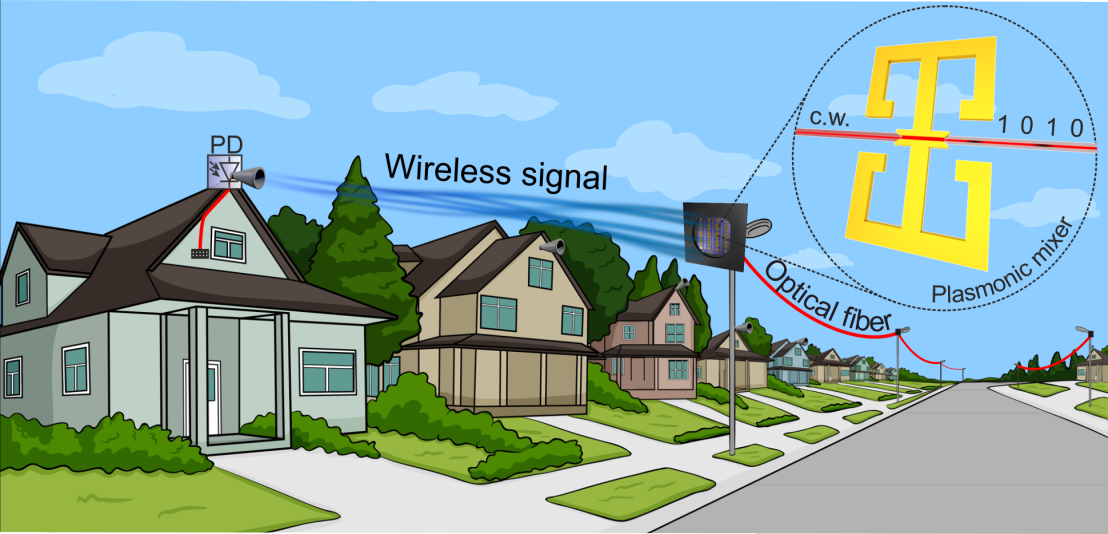Nature Photonics Publication - A novel microwave plasmonic mixer
Researchers from ETH Zurich, Switzerland, have developed a novel tiny wireless antenna concept that may deliver high-speed internet from the curb directly to the house. The novelty in this invention is a new type of wireless receiver, which can directly map a wireless signal to an optical fiber - without the need for any electrical power connection. The antenna together with the optical scheme are built on a single chip. The group has demonstrated transmitting wireless data at 20 Gbit/s.

In recent years, a plethora of new wireless applications has emerged, especially with the continuous development of new mobile devices such as smartphones, smart watches and wearable electronics. In addition, new multimedia applications demand higher and higher connection speeds to be provided by the wireless connections to mobile devices. To this end, the wireless carrier frequency is shifting towards millimeter-wave and terahertz bands, providing much larger transmission capacity. Yet, with the increase in frequency, the electronics become much more complex, and in turn more expensive.
This large demand for wireless communications however ultimately needs to be passed on to a fiber network. This requires a network of access points which allows transferring of the data across an optical fiber network. Optical fiber networks have become the de-facto standard for wired communications. Future wireless systems would ideally rely on direct optical-to-wireless transmitters, and direct wireless-to-optical receivers, omitting any electronics. Such devices would be very compact with reduced complexity, and low cost if implemented in a large-scale fabrication technology such as the silicon platform.
Now, ETH PhD student Yannick Salamin and colleagues have developed a new electro-optic device capable of directly converting a wireless signal of 60 GHz to an optical fiber. The group was able to demonstrate a fiber-wireless link transmitting wireless data signals up to 10 and 20 Gbit/s over wireless distances of 5 and 1 m using their novel wireless receiver. This is 10 to 100 times more data than standard wireless networks can provide while the footprint is down by a factor 10’000 and power consumption is at a fraction of what was needed so far.
The breakthrough was enabled by the recent development of a new type of ultra-fast electro-optic plasmonic phase modulator, and its co-integration with a resonant antenna, i.e. Plasmonic mixer. It is important to note that the new device seamlessly converts the wireless signal directly to an optical fiber without any electronics, thus, not consuming any power. The device features an ultra-compact structure of only 900 microns in length and 350 microns wide (for comparison a human hair is about 150 microns in diameter) fabricated on the low-cost silicon platform. Such a compact and scalable technology has great potential for future beamforming and phase array systems for optical and wireless communication, and sensing applications.
Y. Salamin, B. Baeuerle, W. Heni, F. C. Abrecht, A. Josten, Y. Fedoryshyn, C. Haffner, R. Bonjour, T. Watanabe, M. Burla, D. L. Elder, L. R. Dalton & J. Leuthold, “Microwave plasmonic mixer in a transparent fibre-wireless link”, Nature Photonics (2018), DOI: 10.1038/s41566-018-0281-6
external page Link to the publication